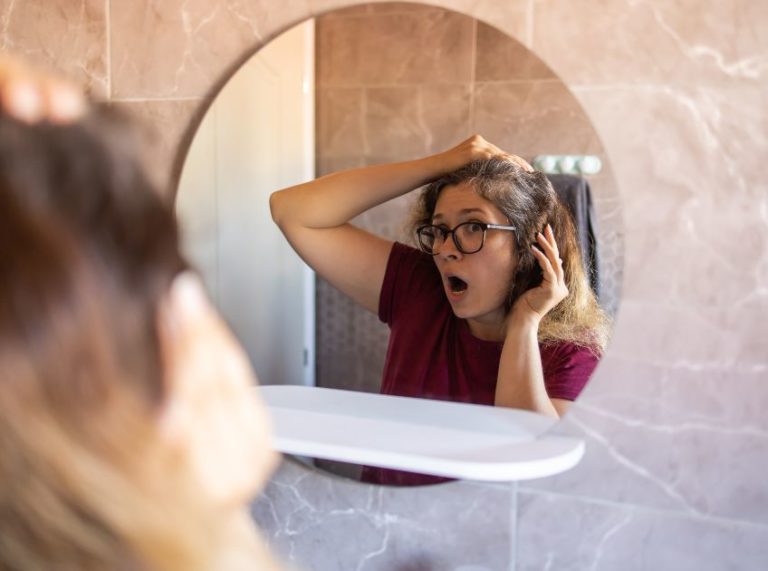
Important: This article is for informational purposes only. Please read our full disclaimer for more details.
Silk and satin have been loved as symbols of luxury and refinement. They enhance nearly the whole lot we see around us. From apparel to the bedding in our houses, they offer a smooth and sleek appearance that aesthetically appeals to our eyes.
Despite their similar appearances and textures, these fabrics are quite different from each other.
In this article, we will explore the trends of silk vs satin pillowcases for hairs. We will also help you understand their basic variations and how to make informed choices.
What is Silk Material?

Silk, hailed for being the epitome of opulence, has an origin that dates to ancient China. Produced through silkworms, silk is a herbal protein fibre created from silk cocoons (1). It is known for its softness, gloss, and hypoallergenic houses.
Unlike other fabrics, silk boasts a unique capacity to keep moisture and oils in the pores of the skin and hair. This makes it a great preference for pillowcases. Its clean texture additionally minimises friction and stops hair breakage. It also reduces pores and skin inflammation in the course of sleep.
Additionally, silk is less absorbent than cotton (2). This ensures that the important oils and skin care products stay on the skin, ensuring hydration and nourishment.
The Benefits of Silk
- Luxurious Texture: Silk’s distinct softness and vivid appearance evoke an enjoyment of sophistication, elevating any place with its undying allure.
- Hypoallergenic: Silk is mild on the pores and skin. This makes it appropriate for individuals prone to hypersensitive reactions (3).
- Moisture Retention: Silk’s non-absorbent nature keeps moisture within the pores, skin and hair. It prevents dehydration and maintains a healthy complexion.
- Hair Protection: Silk pillowcases minimize friction. This helps in lowering hair breakage, tangles, and frizz at the same time as retaining hairstyles overnight.
- Temperature Regulation: Silk’s breathable cloth maintains airflow. It allows the pores and skin to be comfortable and snug. This makes sure for a restful night time’s sleep even in warmer climates.
What is Satin Material?

Satin has a smooth appearance because of which people often mistake it for silk. Traditional satin is made from silk fibres but currently it is produced with synthetic polyester, rayon, and acetate substances.
Despite its artificial composition, satin replicates the sheen appearance of silk. It also offers an extra low-fee opportunity with comparable blessings.
Satin pillowcases additionally reduce hair breakage, maintain moisture, and promote healthier pores and skin by reducing friction.
The Benefits of Satin
- Affordability: Satin pillowcases offer a cheaper alternative for those looking for the advantages of silk without the pinnacle-class charges.
- Smooth Texture: Satin’s sleek surface minimises friction and static, preventing hair breakage and maintaining smooth, frizz-loose hair.
- Moisture Retention: Like silk, satin pillowcases preserve moisture inside the pores, skin, and hair. This aids in preventing dehydration and preserving herbal oils.
- Easy Maintenance: Satin pillowcases are sturdy, hence, convenient for ordinary use and care.
- Hair and Skin Protection: Satin pillowcases prevent sleep wrinkles. They also maintain the performance of skin care products.
Differences between Silk Vs Satin Pillowcase
Silk and satin share similarities in look and texture. However, their composition, manufacturing methods, and rate points vary.
Silk is a natural fibre obtained by the process of ‘seri-culture’ (4). In contrast, satin is a weave made from several synthetic fibres. They offer an extra, less high-priced opportunity with similar benefits.
Both materials provide a frictionless floor to protect the hairs, pores, and skin. Silk offers a more superior moisture retention and has certain temperature law abilities.
Below is a table differentiating between silk and satin pillowcases-
| Feature | Silk Pillowcases | Satin Pillowcases |
| Material | Made from natural silk fibers | Made from synthetic fibers like polyester or nylon |
| Texture | Smooth, soft, and luxurious | Smooth and silky, mimicking the feel of silk |
| Breathability | Highly breathable, allowing for better airflow | Less breathable compared to silk |
| Temperature Regulation | Regulates temperature, keeping you cool in summer and warm in winter | May retain heat more than silk, potentially feeling warmer |
| Hair Benefits | Gentle on hair, reducing frizz and breakage | May cause less friction compared to cotton pillowcases, reducing hair damage |
| Skin Benefits | Smooth surface reduces friction, minimizing skin irritation and wrinkles | Smooth surface may reduce friction, potentially minimizing skin irritation and wrinkles |
| Moisture Absorption | Absorbs moisture, keeping skin and hair hydrated | Less absorbent compared to silk, may not retain moisture as effectively |
| Durability | Delicate and requires gentle care to maintain | More durable and easier to care for |
| Price | Typically, more expensive due to the natural material and production process | Generally, more affordable due to synthetic materials and production methods |
| Maintenance | Requires delicate hand washing or dry cleaning | Can be machine washed on a gentle cycle |
| Availability | Available in various qualities and price ranges | Widely available in stores and online |
Conclusion
The choice between silk and satin pillowcases depends on the price range, preferences, and skincare needs. While silk offers a luxurious feel whilst providing good moisture retention, satin gives a less luxurious alternative with similar benefits.
Both these fabrics promise to improve the sleep of customers, guard the hair, and nourish the skin. They also ensure that you wake up feeling refreshed and rejuvenated every morning.
Image Source : canva
Related Articles















